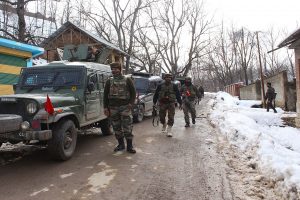The paths connecting western to eastern Bhutan that served as Zhunglam from the 15th century and that remained untrodden for 60 years are revived today.
Trans Bhutan Trail (TBT), an ancient 403 kilometres trail that passes through Haa, Paro, Thimphu, Punakha, Wangduephodrang, Trongsa, Bumthang, Mongar, and Trashigang was launched yesterday.
Advertisement
His Royal Highness Prince Jigyel Ugyen Wangchuck inaugurated it at Simtokha yesterday.
The full trek will take 36 days to complete but people can opt to take different trails in the nine dzongkhags.
Trekkers on the trail pass through 27 gewogs, 12 mountain passes, five suspension bridges, and 10 cantilever bridges, and can visit 21 temples, 77 choetens, and 30 stupas.
The trail crosses a variety of terrain from lush rice paddies, rhododendron forests, thick wilderness, remote villages and bustling towns. It also goes through some of Bhutan’s major cities including Thimphu the capital and the royal city of Bumthang, according to TBT’s website.
The highest point of the trail is between 3,900 and 4,000 meters above sea level.
Tourism Council of Bhutan’s (TCB) Director General, Dorji Dhradhul said that TBT is a “Trail of Unity”.
He said: “In ancient times, it was used by religious leaders to spread Buddhism, by traders to barter products, by soldiers marching towards battles, by legendary Garps to share secret messages, and most importantly, by our beloved monarchs to meet with people and thus unite the country.”
With the development of the national highway in the 1960s, the trail was neglected to cause the bridges, footpaths and other architects to collapse. Furthermore, the separation of landholdings did not foster migration hence the use of the trail.
The redevelopment of the trail started in 2018 with guidance from His Majesty The King, and collaboration between TCB and the Bhutan Canada Foundation led by Sam Blyth.
Dorji Dhradhul said that TBT is about exploring ancient traditions, an adventure through the country’s ecological inheritance, and a celebration of a unique cultural heritage. The trail is open to everyone.
The trekkers passing villages can opt to stay in homestays or hotels. People can experience a hike or choose different locations and days of trekking.
A total of 170 QR codes are placed on the trail each revealing information about the place.
The trail was restored engaging villagers, de-suups, scouts, and some interested individuals.
“The Trans Bhutan Trail is a trail that unites, and today’s inauguration is a result of a national collaborative effort,” said Dorji Dhradhul.
The Trans Bhutan Trail also launched its Membership Programme, which contributes directly to the sustainability of the trail.
There are two types of memberships – Institutional Membership and Individual Membership. Starting at only Nu. 300 per person per year, the membership allows every Bhutanese and all friends of Bhutan to become stewards of this important cultural heritage.
As a part of the membership programme, all members will receive a TBT passport to document and log their trail exploration and adventures. It will help members track their journey in the footsteps of their ancestors across the nation.
With over 70 TBT ambassadors across the trail, users can get their passports stamped for each gewog they pass through. In addition to stamping the trail passports, the ambassadors are also key to delivering an authentic local experience to all trail users.
Ambassadors belong to the local community and are shopkeepers, farmers, hoteliers and homestay owners, ready to help all travellers and share their stories of local legends.
“I am excited to welcome travellers to Chungseykha. We hope to not only share our stories, but also learn about the guests and their culture,” said Passang Wangdi, a TBT ambassador in Phangyuel gewog in Wangdue.
Other benefits of membership include opportunities to plant trees along the trail, discounts on TBT partner locations and TBT merchandise, invitation to all TBT events, and members-only hikes along the trail.
Senior TBT Project Director Sonam Rinchen said, “Together we can commit to maintaining and enhancing this ancient trail out of respect to the ancestors who built it, and as a gift to the future generations.”
He said that the trail was an important part of Bhutanese history. “It is a national symbol of unity, it is our cultural heritage and it belongs to every Bhutanese. The membership program is an opportunity for all citizens to take ownership of this ancestral trail.”
TBT was named in TIME’s 50 extraordinary travel destinations around the world for 2022 in July this year.











